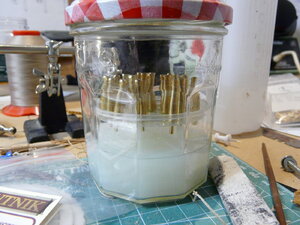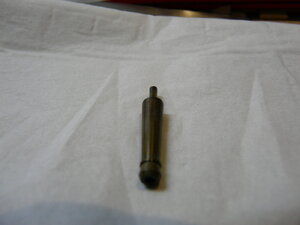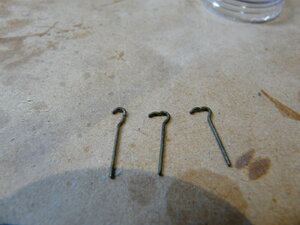Brass is an alloy.... Modern brass is about 70% copper and 30% zinc with some additional elements added sometimes for different applications. Ammonia WILL color brass, HOWEVER... please remember what frankieg said about cracking.!!!
Ammonia attacks the zinc in the alloy. The result is a form of stress corrosion cracking. The more zinc there is in the brass, the worse the cracking. In modern brass this IS a problem. Once the zinc percentage in the alloy rises above 15% the problem gets worse. Since modern brass is about 30% zinc....well, you can see what’s going to happen.
Obviously, the thicker, heavier brass in a cannon is not as critical as thinner pieces. Thinner pieces, like photo-etched, WILL BE affected, and you won’t like the results.!!
Brass, contains stress risers wherever it has been cold formed. Any brass piece that has been formed, shaped, bent, etc. will have these stress points. These stress risers become focal points for stress corrosion cracking. Exposing these brass components to ammonia will cause them to crack. It might happen immediately, OR it might happen weeks or months later.
It doesn’t have to be a lot of ammonia either.!! I have seen (yes, ME..!) brass ammunition start cracking around the shoulder and neck of the cartridge case after being stored in a dry shed with bags of fertilizer. The ammonium nitrate in the fertilizer was enough to affect the brass cases. I didn’t think about it at the time. I should have stored it in hermetically sealed containers instead of wooden packing crates.!! Lesson learned.!!!!
Bottom line = Keep ammonia away from modern brass alloys...ESPECIALLY thin sections.!!











